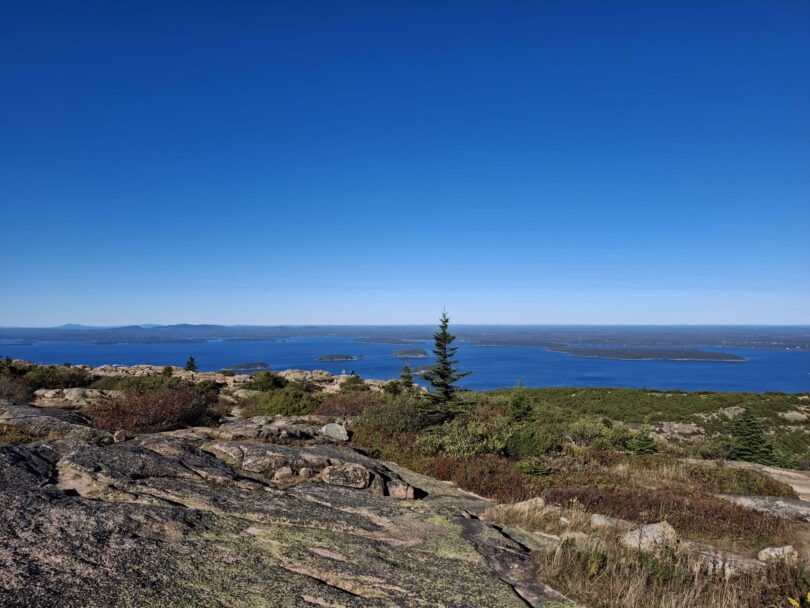Acadia National Park, Maine, U.S.A. – There is something unforgettable about stepping into a place where nature speaks louder than city noise and the air just feels a little cleaner with every breath.
Listen to an audio recording of this article:
Our first visit to an American national park took us to the stunning coast of Maine, to Acadia National Park, where rugged coastlines meet peaceful forests and pink granite peaks rise above the ocean.
When we initially thought about an American national park, the first ones that came to mind were places like the Grand Canyon or Yellowstone, the iconic parks that make frequent appearances in our media and books.
While previously unknown to us, Acadia National Park in Maine shows a different side of America’s landscape. Found along the Atlantic coastline, the park’s rock formations and vast deciduous forests resemble a rainbow in the fall.
What makes Acadia so special is this rare mix of mountains, ocean, forest and lakes, all remnants of the last Ice Age.

The landscape was shaped by glaciers thousands of years ago, leaving behind smooth granite peaks and clear, deep lakes. The underlying geology of Acadia is dominated by ancient igneous and metamorphic rocks, which formed deep inside the Earth under intense heat and pressure, and over time, they were pushed up to the surface.
This durable rock gives Acadia its hard and rugged landscape.


But not only glaciers shaped Acadia’s landscape. The ocean has shaped the coast as well, creating unusual phenomena like Thunder Hole, a stunning natural feature where ocean waves surge into a narrow crevice carved into the granite. As the tide rises and waves crash with force, water is compressed and expelled with a thunderous roar, echoing like a powerful drum.
Much like other national parks, however, Acadia is also threatened by climate change. Rising sea levels, warming waters and shifting weather patterns are increasingly putting pressure on the park’s wildlife and scenery.
The lakes and coasts have also been altered by people over the last 100 years through tourism, land uses and pollution.

The park is working to preserve its habitat and limit the impact of tourism by making certain areas off limits to foot traffic and reducing the number of cars that take visitors up the road to Cadillac Mountain.
While as tourists we might have only been visiting for a short time, walking through the stunning landscape we felt that it was also our responsibility to protect the place.
The thousands of tourists and infrastructure created to support them have a large combined effect on the park’s wildlife and habitat. Sticking only to marked trails and minimizing waste are the least we can do as guests at the park.
Protecting the park allows us to preserve the wildlife and habitat and keep enjoying the park in the years ahead. At our final stop along the Loop Road, we saw a man sitting in a folding chair atop the rugged cliff and looking out to the Atlantic.

It was a simple moment, but it captured what is so special about Acadia as a place to slow down, take in the stunning landscape and reflect.
Lyat Melese is a Correspondent with Youth Journalism International from Virginia, U.S.A. She co-authored this article.
Lina Marie Schulenkorf is a Correspondent with Youth Journalism International from Dresden, Germany. She co-authored this article.



